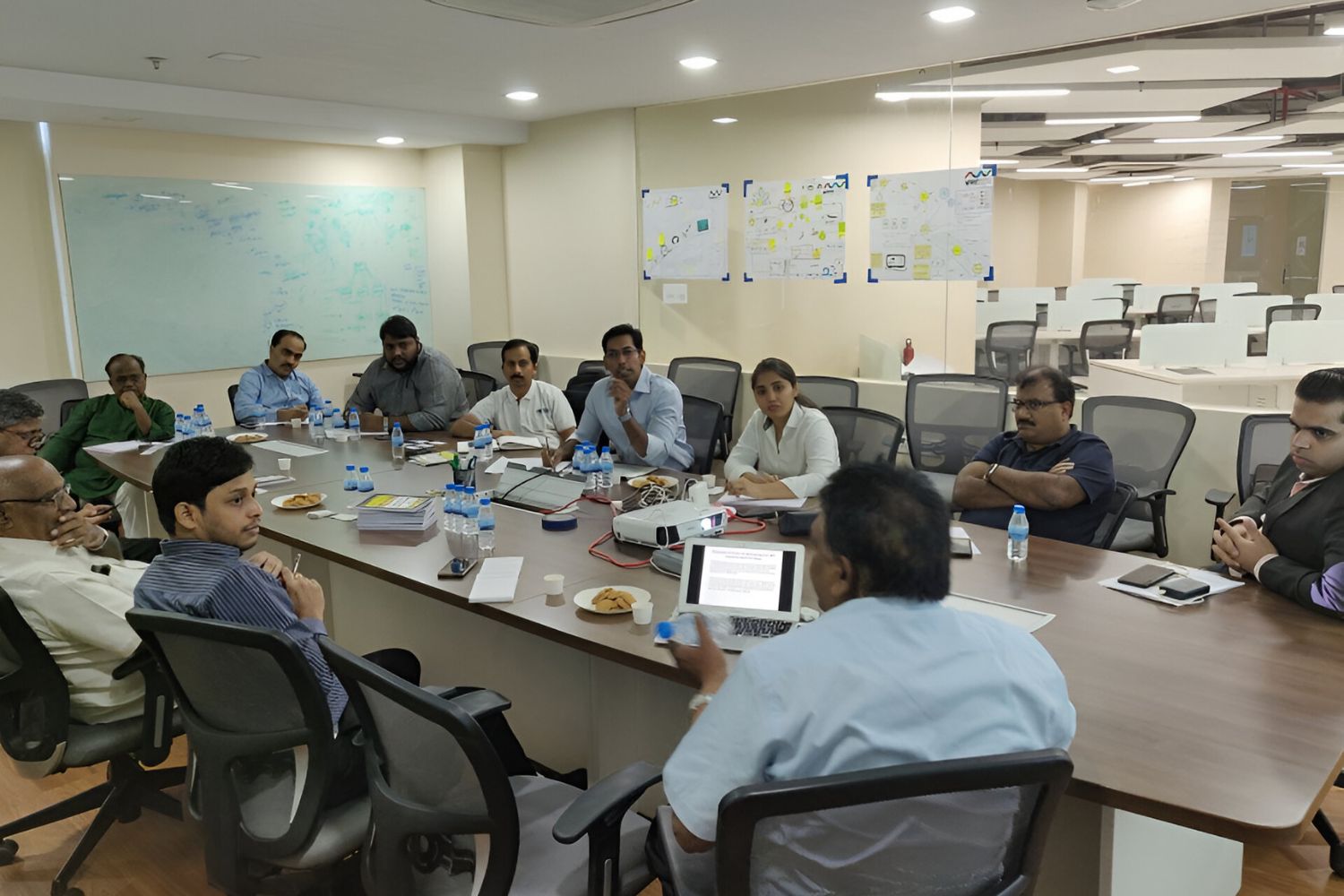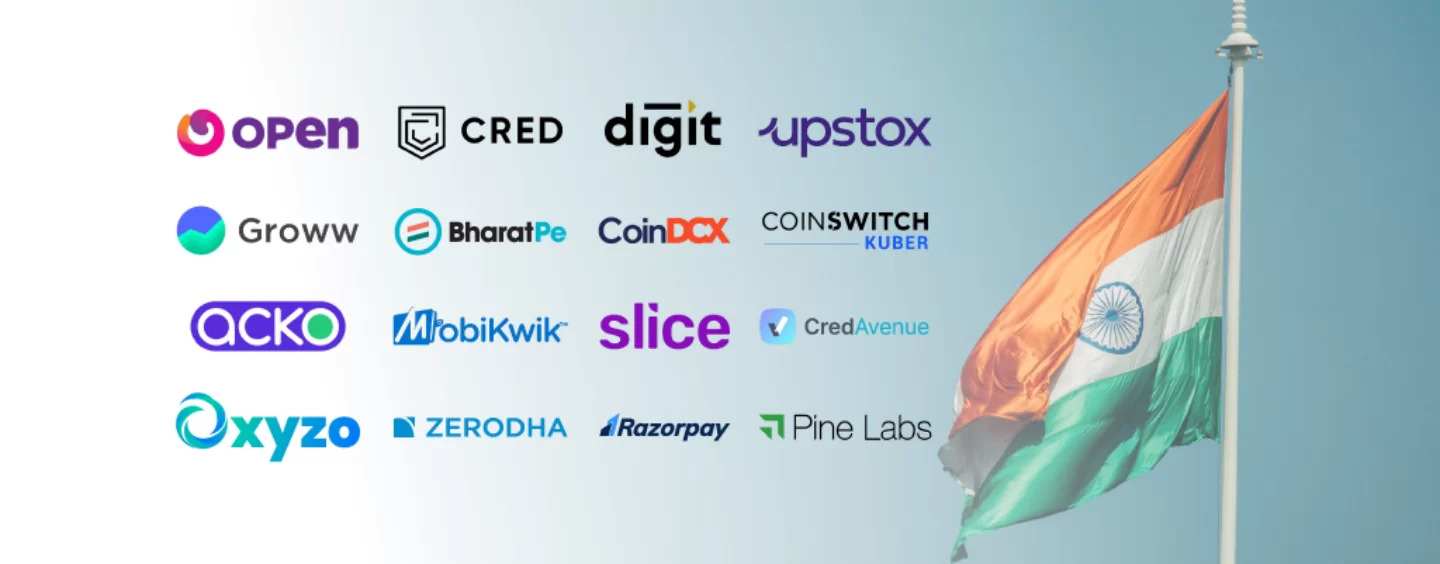Introduction
With the rapid growth of technology and the increasing demand for digital solutions, the fintech industry has emerged as a game-changer in India. Fintech, short for financial technology, refers to the integration of technology in financial services to enhance efficiency, accessibility, and convenience for users. This revolutionary sector has opened up new avenues for entrepreneurs and investors who are looking to capitalize on the growing digital economy.
In recent years, India has witnessed a significant surge in fintech adoption, fueled by factors such as government initiatives to promote digital payments, favorable regulatory environment, and the increasing penetration of smartphones and internet connectivity. This has created a favorable ecosystem for aspiring entrepreneurs to start their own fintech companies and tap into the immense potential of the Indian market.
However, venturing into the world of fintech requires careful planning, strategic thinking, and a solid understanding of the market dynamics. In this article, we will provide you with a step-by-step guide on how to start a fintech company in India, covering various crucial aspects such as market research, legal compliance, funding, technology, team building, and more. Whether you are a budding entrepreneur or an investor exploring the fintech space, this guide will equip you with the necessary knowledge to embark on this exciting journey.
Understanding Fintech in India
Before diving into the process of starting a fintech company in India, it is essential to have a clear understanding of the fintech landscape in the country.
India is witnessing a fintech revolution, driven by factors such as the government’s push towards digitalization, a rising middle class, and increasing smartphone penetration. Fintech companies in India are leveraging technology to provide innovative solutions across various sectors, including payments, lending, insurance, wealth management, and more.
One of the significant drivers of fintech growth in India is the government’s focus on financial inclusion. Initiatives such as the Pradhan Mantri Jan Dhan Yojana (PMJDY), Aadhaar, and the Unified Payments Interface (UPI) have played a crucial role in expanding access to financial services for the unbanked and underbanked population.
In addition to financial inclusion, fintech in India is also transforming traditional banking and financial services by digitizing and simplifying processes. Mobile wallets, digital payment platforms, peer-to-peer lending platforms, robo-advisory services, and online insurance aggregators are just a few examples of the innovative solutions offered by fintech companies.
It is important to note that while the opportunities in the Indian fintech market are vast, there are also challenges to be aware of. Competition is intense, both from domestic and international players. Moreover, navigating the regulatory landscape can be complex, with regulations specific to each subsector of fintech.
To thrive in the Indian fintech space, it is crucial to stay updated with the latest industry trends, understand user preferences, and keep an eye on regulatory developments. By doing so, you can identify opportunities, differentiate your offerings, and build sustainable and scalable fintech solutions that address the unique needs of Indian consumers.
Market Research and Analysis
Market research and analysis are key components of starting a successful fintech company in India. It involves gathering insightful data and understanding the market dynamics to identify potential opportunities and validate your business idea.
Start by researching the fintech landscape in India and identifying the sectors that show significant growth potential. Look into the current trends, consumer behavior, market size, and competition in each sector. This will help you narrow down your focus and determine which area of fintech you want to enter.
Conducting competitor analysis is crucial to understand the strengths and weaknesses of existing players in the market. Identify their unique selling points, pricing strategies, target audience, and the gap in the market that you can fulfill. This will help you position your fintech solution effectively and differentiate yourself from the competition.
In addition to analyzing the market and competitors, it is essential to understand the needs and preferences of your target audience. Conduct surveys, interviews, or focus groups to gather insights on user pain points, expectations, and behavior. This will enable you to design a product or service that truly meets the needs of your users.
Furthermore, keep a close eye on regulatory developments in the fintech sector. Stay updated with policies, guidelines, and licensing requirements set by regulatory authorities such as the Reserve Bank of India (RBI), Securities and Exchange Board of India (SEBI), and Insurance Regulatory and Development Authority of India (IRDAI). Compliance with regulatory frameworks is crucial for the long-term sustainability and trustworthiness of your fintech company.
By conducting thorough market research and analysis, you will be equipped with the knowledge and insights to make informed decisions, mitigate risks, and position your fintech company for success in the Indian market.
Identifying and Solving a Problem
One of the fundamental principles of starting a fintech company is identifying a problem that needs to be solved. Successful fintech startups address pain points and provide innovative solutions that offer convenience, efficiency, and improved user experience.
Start by conducting market research to identify the gaps and challenges in the existing financial services landscape. Look for areas where customers face difficulties or inefficiencies in accessing financial services, making payments, obtaining loans, managing wealth, or any other financial aspect.
Once you have identified a problem, focus on developing a unique solution that sets your fintech company apart. It could be a new payment platform, a lending solution for underserved segments, a robo-advisory service, or any other innovative offering that addresses the identified problem.
Consider the technology and infrastructure required to develop and deliver your solution. Leverage emerging technologies such as artificial intelligence, blockchain, or machine learning to enhance the functionality and security of your fintech solution.
Furthermore, ensure that your solution is user-centric and delivers a seamless experience. Keep in mind the user interface, ease of use, speed, and security of transactions. By solving a genuine problem and providing a user-friendly solution, you can gain a competitive edge in the fintech market.
While identifying and solving a problem is essential, it is equally important to validate your solution through prototype testing and feedback from potential users. This iterative process will allow you to refine and improve your product or service based on real-world insights.
By focusing on solving a problem and offering a compelling solution, you can position your fintech company for success and gain traction in the Indian market.
Planning and Strategy
Creating a solid plan and strategy is crucial for the success of your fintech company. It helps you outline your goals, define your target market, and set a clear roadmap for achieving your objectives.
Start by defining your mission and vision. What do you aim to achieve with your fintech company? What impact do you want to make in the industry? Having a clear purpose will guide your decisions and keep you focused on the bigger picture.
Next, conduct a SWOT analysis (strengths, weaknesses, opportunities, and threats) to assess your internal capabilities and external market conditions. Identify your strengths that give you a competitive advantage and your weaknesses that need to be addressed. Additionally, analyze the opportunities available in the market and the potential threats that could impact your business.
Based on your analysis, set specific, measurable, attainable, relevant, and time-bound (SMART) goals. Break down your goals into actionable steps and create a timeline for achieving them. This will help you stay organized and track your progress.
Develop a comprehensive marketing and customer acquisition strategy. Identify your target audience and understand their needs and preferences. Determine the channels and tactics that will effectively reach and engage your target market. This could include digital marketing, content marketing, social media advertising, partnerships, or other channels specific to the fintech industry.
Moreover, consider the scalability of your business model. Ensure that your infrastructure, technology, and team can support the growth of your fintech company as you acquire more users and expand your operations.
Last but not least, be prepared to adapt and iterate your strategy as you gather insights and feedback from your users and monitor market changes. The fintech industry is highly dynamic, so flexibility and agility are key to staying ahead of the competition.
By carefully planning and strategizing, you can lay a strong foundation for your fintech company and increase your chances of success.
Legal and Regulatory Compliance
Legal and regulatory compliance is of utmost importance when starting a fintech company in India. The financial services industry is tightly regulated to protect consumers and maintain the stability of the financial system. Therefore, it is essential to navigate the regulatory landscape and ensure compliance with applicable laws and regulations.
Start by understanding the regulatory framework specific to your fintech subsector. For example, if you plan to offer payment services, familiarize yourself with the guidelines set by the Reserve Bank of India (RBI) for payment systems. If you intend to provide investment-related services, you need to comply with the regulations set by the Securities and Exchange Board of India (SEBI).
Obtain the necessary licenses and approvals required to operate legally. This may include obtaining registration as a Payment System Operator (PSO), Non-Banking Financial Company (NBFC), or other relevant licenses depending on your business activities. Consult legal experts or engage with regulatory consultants who specialize in the fintech industry to ensure compliance.
Take data protection and privacy seriously. Ensure that you comply with the regulations under the Personal Data Protection Bill and maintain robust data security measures. Safeguard user information and implement appropriate data protection policies to build trust with your customers.
Keep abreast of the changing regulatory environment and monitor any updates or amendments to the existing regulations. Fintech regulations are continuously evolving, and it is essential to stay updated to ensure ongoing compliance.
Finally, establish a strong compliance framework within your organization. Designate a compliance officer or team who will be responsible for monitoring and ensuring adherence to regulatory requirements. Implement internal controls, policies, and procedures to mitigate compliance risks.
By prioritizing legal and regulatory compliance, you can build a trustworthy and sustainable fintech company that operates within the boundaries of the law and fosters consumer confidence.
Funding and Investment
Finding the right funding and investment is crucial for the growth and success of your fintech company. Whether you are bootstrapping or seeking external funding, having adequate capital is essential to fuel your operations, develop your product, and scale your business.
Start by assessing your funding needs. Determine how much capital you require to launch and sustain your fintech company in the initial stages. Consider factors such as technology development, marketing expenses, team salaries, and operational costs.
If you have personal savings or access to family and friends who are willing to invest, consider self-funding or seeking angel investments. This can provide the initial capital to kickstart your venture.
Alternatively, you can explore venture capital (VC) funding. Pitch your business idea to venture capital firms that specialize in fintech investments. Prepare a compelling pitch deck that outlines your value proposition, market potential, and growth strategy.
Participating in startup accelerators or incubators can also provide valuable funding opportunities. These programs offer mentorship, networking, and access to investors who are interested in supporting early-stage fintech startups.
Equity crowdfunding platforms can also be a viable option to raise capital. These platforms allow you to attract funding from a diverse pool of investors who are interested in supporting innovative fintech ideas.
Additionally, consider exploring government schemes, grants, and subsidies specifically designed to promote fintech innovation and entrepreneurship. Research and apply for such programs that align with your business objectives.
Lastly, maintain a clear and transparent financial plan. This will instill confidence in potential investors and venture capitalists. Demonstrate a strong understanding of your financial projections, revenue streams, and scalability of your business model.
Remember, securing funding is not a one-time event. It is an ongoing process, especially as you scale and grow your fintech company. Stay proactive in seeking investment opportunities and continue to refine your pitch as you gather feedback from investors and mentors.
By carefully planning and executing your funding strategy, you can secure the necessary capital to fuel the growth of your fintech company.
Technology and Infrastructure
Technology is at the core of any fintech company, and having a robust infrastructure is essential for delivering reliable and secure financial services. Investing in the right technology and infrastructure will enable you to provide seamless user experiences and ensure the smooth operation of your fintech solutions.
Start by identifying the technology stack required for your fintech platform. This may include programming languages, frameworks, databases, cloud services, and security protocols. Choose technologies that are scalable, secure, and aligned with your long-term business goals.
Consider partnering with technology service providers or development agencies that specialize in fintech solutions. They can provide expertise in building secure payment gateways, integrating with banking systems, or implementing anti-fraud measures.
Data security is of utmost importance in the fintech industry. Implement robust security measures to protect user data and adhere to data protection regulations. Utilize encryption, multi-factor authentication, and stringent access controls to safeguard sensitive information.
Furthermore, ensure that your infrastructure can support high transaction volumes and handle peak loads. Explore scalable cloud solutions that can easily accommodate your growing user base and handle fluctuations in demand.
Embrace emerging technologies to stay ahead of the competition and deliver innovative fintech solutions. Artificial intelligence can enhance processes such as fraud detection, credit scoring, and customer support. Blockchain technology can enhance transparency and security in areas such as digital identity, cross-border payments, and smart contracts.
Regularly monitor and maintain your technology infrastructure to ensure its reliability. Implement backup systems and disaster recovery plans to mitigate potential technical failures or data breaches.
Lastly, stay updated with the evolving technology landscape and industry trends. Continuously assess the relevance and effectiveness of your technology stack and adapt accordingly.
By investing in the right technology and infrastructure, you can build a solid foundation for your fintech company and deliver exceptional user experiences.
Building a Team
Building a talented and dedicated team is essential for the success of your fintech company. Surrounding yourself with the right people who are aligned with your vision and possess the necessary skills and expertise is crucial in navigating the competitive fintech landscape.
Start by clearly defining the roles and skills required for your team. Identify the core areas such as technology development, product management, marketing, operations, compliance, and customer support. Determine the ideal team size based on the complexity and scalability of your fintech solution.
Create job descriptions that capture the essence of each role and the specific qualifications and experience required. Use various channels such as online job portals, social media, and professional networks to attract top talent.
Look for individuals who possess not only the required technical skills but also align with your company culture and values. Seek team members who are innovative, collaborative, adaptable, and have a passion for solving problems in the fintech industry.
Consider outsourcing certain functions or partnering with technology service providers to complement your core team. This can help you access specialized skills or reduce costs in areas that are not your core competency.
Once you have built your team, foster a culture of continuous learning and growth. Encourage professional development opportunities such as workshops, training programs, or industry conferences. Provide a supportive environment that allows team members to thrive and contribute their best.
Communication and collaboration are vital for an effective team. Foster open lines of communication, encourage knowledge sharing, and establish clear channels for feedback and collaboration.
Remember, building a team is not a one-time effort. Regularly reassess your team composition as you grow and evolve. Hire individuals who complement your existing skill set and bring fresh perspectives to the table.
By building a talented and cohesive team, you can enhance the capabilities of your fintech company and increase your chances of success in the competitive marketplace.
Product Development and Testing
Product development and testing are vital stages in the process of building a successful fintech company. During this phase, you transform your ideas into a tangible product or service that meets the needs of your target audience.
Start by establishing a clear product roadmap that outlines the features, functionalities, and goals of your fintech solution. Prioritize the development of core features that provide immediate value to your users, while keeping room for future enhancements.
Implement an agile development framework that allows for iterative and incremental improvements. This way, you can gather user feedback early on and make necessary adjustments to optimize the user experience. Utilize user-centric design principles to create an intuitive and visually appealing interface.
Quality assurance and testing are crucial to ensure that your fintech solution performs as expected. Conduct thorough testing across different scenarios to identify and resolve any bugs, glitches, or performance issues. Perform security testing to safeguard user data and protect against potential vulnerabilities.
Consider implementing a closed beta testing phase where a limited group of users can access your product and provide feedback. This feedback will be invaluable in identifying areas for improvement and validating the usability and functionality of your fintech solution.
Continuous monitoring and monitoring analytics will provide insights into user behavior, adoption rates, and usage patterns. Leverage this data to iterate and enhance your product based on real-time user insights.
As you refine and enhance your product, consider seeking partnerships or collaborations with other fintech companies or financial institutions. This can allow you to leverage existing infrastructure, customer base, or their expertise while expanding your reach and offering added value to your users.
Lastly, ensure that your product adheres to all relevant regulatory requirements and standards. Compliance is crucial for maintaining trust and credibility with your users and regulators.
By focusing on product development and testing, you can deliver a high-quality fintech solution that meets the needs of your users and offers a seamless and secure experience.
Marketing and Customer Acquisition
Effective marketing and customer acquisition strategies are essential for the success of your fintech company. In a competitive landscape, it’s crucial to stand out and attract the attention of potential customers. Here are some key steps to consider:
- Develop a comprehensive marketing plan: Identify your target audience and understand their needs and preferences. Tailor your messaging and positioning accordingly. Outline your marketing goals, strategies, and tactics.
- Digital marketing: Leverage digital channels such as search engine optimization (SEO), content marketing, social media marketing, and email marketing to reach and engage your target audience. Create compelling content that showcases the value and benefits of your fintech solution.
- Partnerships and collaborations: Seek collaborations with other fintech companies, financial institutions, or relevant industry players. This can help you access a wider customer base, enhance credibility, and leverage existing customer relationships.
- Referral programs: Implement referral programs to incentivize your existing users to refer your fintech solution to their network. Word-of-mouth marketing can be a powerful tool in acquiring new customers.
- Thought leadership and PR: Establish yourself as a thought leader in the fintech industry by publishing insightful content, participating in industry events, and securing media coverage. Position yourself as an expert in your niche to attract attention and build credibility.
- Customer support and engagement: Provide excellent customer support and engagement to build trust and loyalty. Address customer queries promptly and proactively seek feedback to improve your offering and address any concerns.
- Analytics and data-driven marketing: Utilize analytics and data-driven marketing strategies to understand customer behavior, preferences, and conversion rates. Leverage this data to refine your marketing campaigns and improve customer acquisition strategies.
Remember to track your marketing efforts, measure the performance of different channels, and iterate your strategies based on the insights gained. Continuously optimize your marketing efforts to maximize customer acquisition and retention.
By implementing effective marketing and customer acquisition strategies, you can increase brand awareness, attract a loyal customer base, and drive the growth of your fintech company.
Scaling and Expansion
Scaling and expansion are critical milestones in the growth journey of your fintech company. As your customer base grows and your business gains traction, it is important to have a strategic approach to scaling and expanding your operations.
Here are some key considerations when it comes to scaling and expanding your fintech company:
- Infrastructure and technology: Ensure that your technology infrastructure is scalable to handle increasing user demands. Monitor your systems for performance and scalability, and make any necessary upgrades or enhancements to accommodate growth.
- Geographic expansion: Identify potential markets for expansion based on market demand and regulatory factors. Conduct thorough market research to understand the local dynamics and consumer behavior in the target market. Align your product and marketing strategies to cater to the specific needs of the new market.
- Partnerships and collaborations: Forge strategic partnerships and collaborations with other fintech companies, financial institutions, or technology providers. This can help you leverage their existing customer base, reach, and expertise. Look for opportunities to cross-promote and cross-sell complementary products or services.
- Talent acquisition and team growth: Scale your team by hiring talented individuals who can contribute to your company’s growth. Evaluate the need for additional resources in key areas such as technology development, marketing, customer support, compliance, and operations. Invest in training and development programs to upskill and empower your existing team members.
- Customer retention and loyalty: Put efforts into retaining your existing customers and fostering customer loyalty. Offer personalized experiences, rewards, and loyalty programs to incentivize repeat usage of your fintech solution. Implement proactive customer relationship management strategies to build long-term, valuable relationships with your customers.
- Continuous innovation: Stay ahead of the curve by continuously innovating and enhancing your fintech solution. Monitor industry trends and changing customer needs. Gather feedback from existing customers and incorporate their suggestions into your product roadmap.
As you scale and expand, keep a close eye on the financial health of your company. Ensure that you have adequate funding, manage cash flow effectively, and have a sound financial plan in place to support your growth initiatives.
By approaching scaling and expansion strategically, you can position your fintech company for sustainable growth and success in the ever-evolving fintech industry.
Conclusion
Starting a fintech company in India can be an exciting and rewarding journey. The rapidly evolving fintech landscape, coupled with the government’s push towards digitalization and financial inclusion, presents numerous opportunities for entrepreneurs and investors.
Throughout this guide, we have explored the various steps involved in starting a fintech company in India. From understanding the fintech industry landscape to conducting market research, identifying and solving a problem, planning and strategizing, ensuring legal and regulatory compliance, securing funding, developing a robust technology infrastructure, building a talented team, and scaling and expanding your operations — each step is essential for building a successful fintech venture.
It is important to stay agile, adaptive, and customer-centric in the ever-changing fintech landscape. Continuously monitor industry trends, user feedback, and regulatory developments to refine your offering and stay ahead of the competition.
Remember that success in the fintech industry requires perseverance, innovation, and a commitment to delivering exceptional user experiences. Embrace challenges as opportunities for growth, and always strive for excellence in every aspect of your fintech company.
We hope that this guide has provided valuable insights and guidance on how to start a fintech company in India. Now, it’s time to take the leap, turn your ideas into reality, and make a mark in the dynamic and promising world of fintech.

























